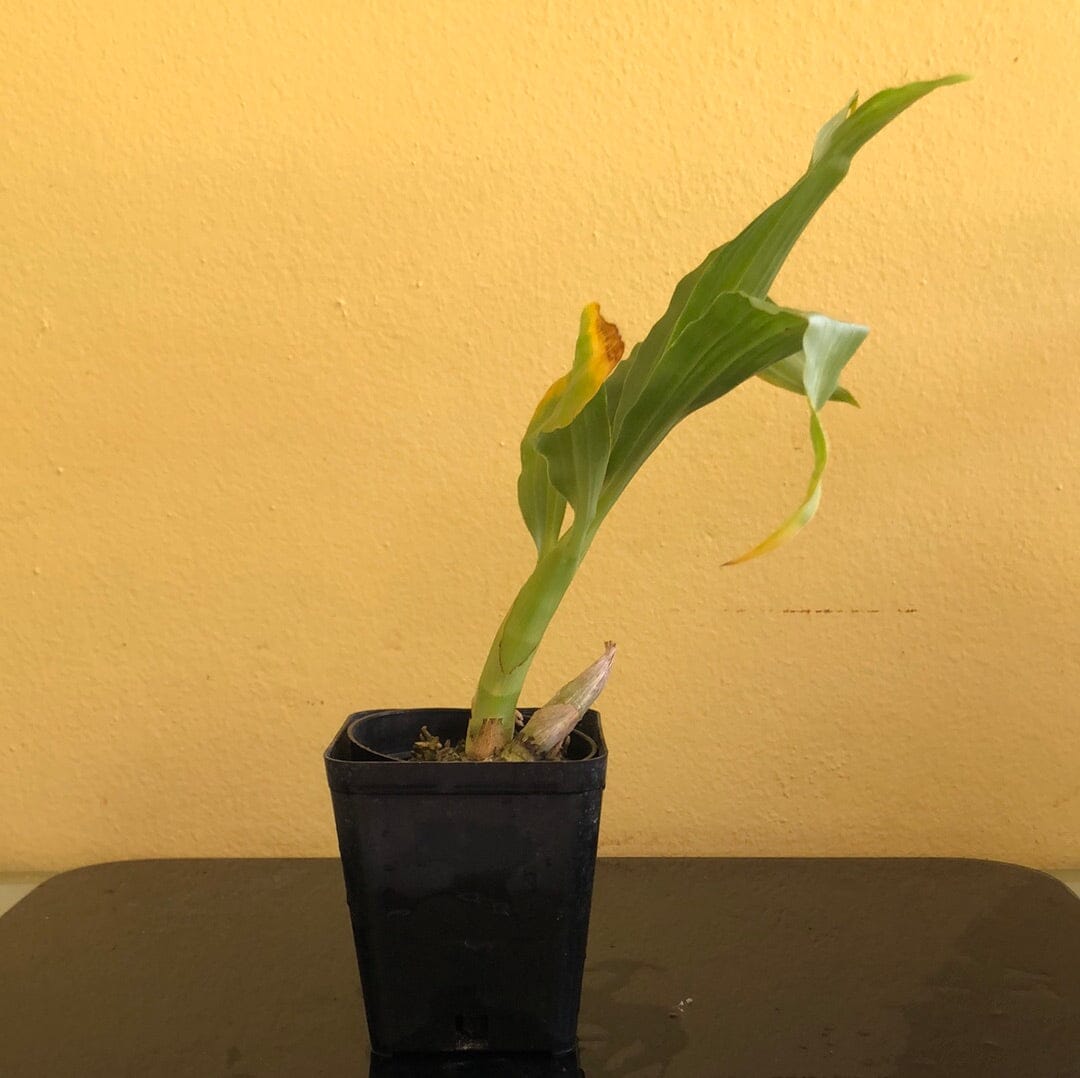La Foresta Orchids
Catasetinae Alliance: Cycnodes cooperi 'Green' HCC/AOS x Cycnodes cooperi 'Mem. Pat Worthington' AM/AOS
Catasetinae Alliance: Cycnodes cooperi 'Green' HCC/AOS x Cycnodes cooperi 'Mem. Pat Worthington' AM/AOS
Couldn't load pickup availability
Introducing the Exquisite Cycnodes Cooperi: A Hybrid Marvel of Nature
Do you love surprises? Well this is definitely one for you! Delve into the world of orchid elegance with our remarkable Cycnodes cooperi, a captivating hybrid that blends the illustrious genes of Cycnodes cooperi 'Green' HCC/AOS x Cycnodes cooperi 'Mem. Pat Worthington' AM/AOS. These exquisite specimens represent a significant leap forward in the cultivation of top-quality Cycnodes cooperi, a beloved member of the Cycnoches species family. We're thrilled to offer these limited-quantity gems this year, allowing you to add a touch of Peru's natural beauty to your orchid collection.
Cycnodes Cooperi: A Natural Wonder of Peru
Native to Peru, Cycnodes cooperi thrives in the lush landscapes of the San Martín region, nestled within the heart of a humid tropical forest. These epiphytic orchids flourish at an elevation of approximately 500 meters, situated just 15 kilometers from the Tarapoto to Yurimaguas road. Here are some key characteristics of this captivating orchid:
-
Size and Growth: Cycnodes cooperi is a compact, hot to warm-growing orchid that forms clumps (caespitose) and can reach heights of up to 40 cm. Its pseudobulbs, which are ovoid-cylindric and about 20 cm long, are concealed by deciduous sheaths that bear lanceolate, channeled, and acuminate leaves. These leaves range from 20 to 35 cm in length and 7 cm in width, graduating in size from the base.
-
Blooms: The blooms of Cooper's Cycnoches emerge from axillary, pendant, and racemose inflorescences, measuring approximately 25 cm in length. These inflorescences are adorned with tubular bracts and small ovate, acute floral bracts. The showy, fleshy flowers boast a delightful chocolate scent and originate near the apex of the mature pseudobulb. These enchanting flowers have a diameter of 9 cm.
-
Flower Varieties: Male flowers of Cycnodes cooperi exhibit a rich mahogany-brown or coffee-brown color with whitish side lobes on the lip and a matte-purple stump. In contrast, female flowers feature outer petals in dark coffee-brown, inner petals with a slightly lighter hue and a yellow base, a yellow lip with a light brown edge, and a purple stump.
Cultivation Tips for Cycnodes Cooperi
Caring for Cycnodes cooperi requires attention to light, temperature, humidity, and potting preferences to ensure these orchids thrive and grace your collection with their stunning blooms.
Light: Cycnodes cooperi thrives in a light level of 20,000 to 30,000 lux. It's essential to provide filtered or dispersed light, avoiding direct sunlight in the afternoon. Maintaining strong air movement is crucial. Interestingly, the intensity of light influences the gender of the flowers: low light encourages female flowers, while high light levels lead to male flowers. Occasionally, inflorescences may feature both male and female flowers, but typically, each inflorescence bears flowers of only one sex.
Temperature: These orchids are thermophilic plants, favoring an average daytime temperature of 31-32°C throughout the year and an average night temperature of 19-21°C. The daily temperature variation should be around 10-13°C.
Humidity: Cooper's Cycnoches thrives in high humidity, requiring around 80% or more humidity throughout the year.
Potting and Watering: You can grow Cycnodes cooperi on cork or hardwood pads, provided that you ensure high humidity and daily watering. During dry and hot summer weather, multiple daily watering may be necessary. Alternatively, you can cultivate them in clay or plastic pots with a well-draining substrate to promote excellent root aeration. During the dormant period, remove the plant from the pot, trim the roots, and place a group of pseudobulbs in an empty pot. In spring, transplant the plant into a slightly larger pot to accommodate one year's worth of growth.
Watering: During active growth, water frequently, ensuring excellent drainage to prevent waterlogged roots. Reduce watering when new growths reach maturity in the autumn.
Fertilization: During active growth, fertilize weekly with 1/4-1/2 of the recommended dose of orchid fertilizer. Use nitrogen-enriched fertilizer in spring to mid-summer, then switch to phosphorus-enriched fertilizer in late summer and autumn.
Rest Period: In winter, Cycnodes cooperi enters a dry resting phase. Be cautious not to overwater during this time. You can remove the orchid from its pot, cut the old roots, and place the pseudobulbs in an empty clay or plastic pot. Mist or lightly water them weekly. When new growth appears in spring, replant the orchid in fresh substrate and gradually increase watering.
This is a blooming size in a 4" pot about 1 to 2 years to bloom, grown from seed, limited!
Cultivating Cycnodes cooperi is a rewarding endeavor, offering the chance to witness the remarkable beauty of these unique orchids in your own home. Their delicate care requirements make them a delightful addition to any orchid enthusiast's collection. Don't miss the opportunity to add a touch of Peru's tropical charm to your orchid garden with our limited-supply Cycnodes cooperi hybrids.
























